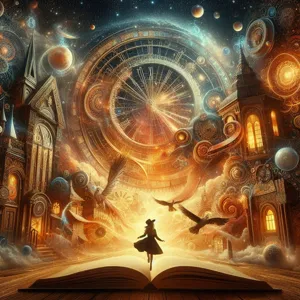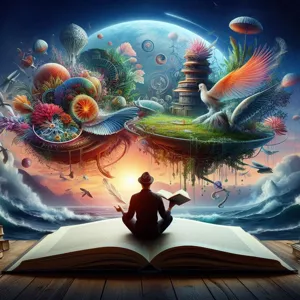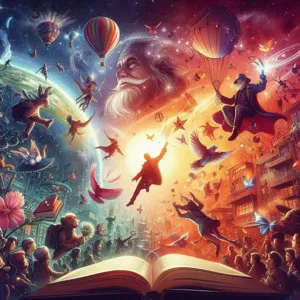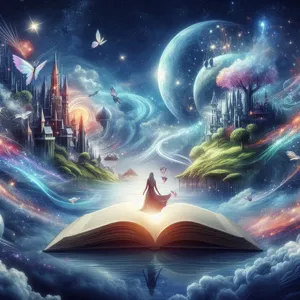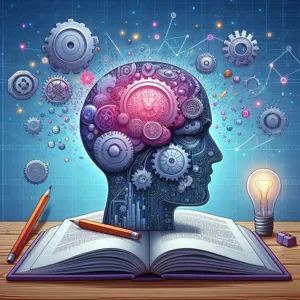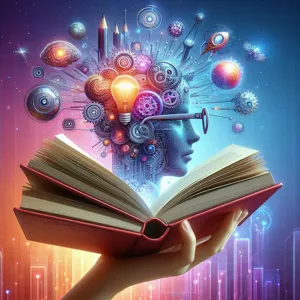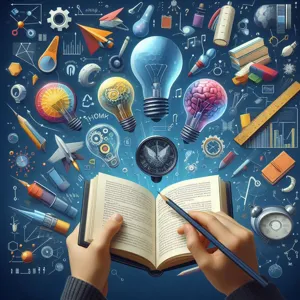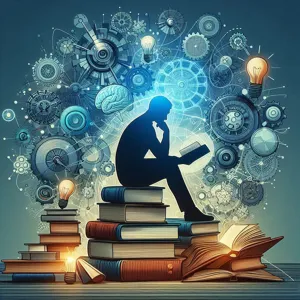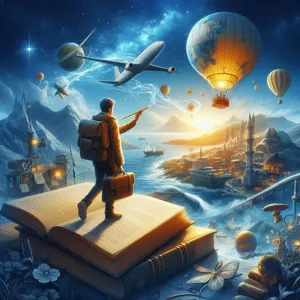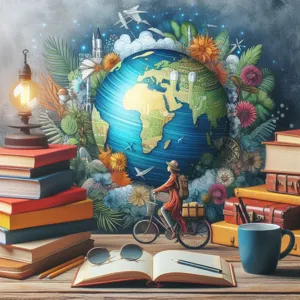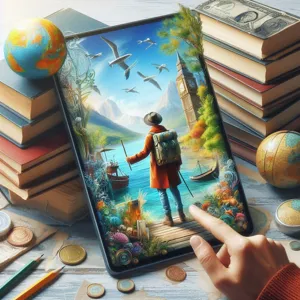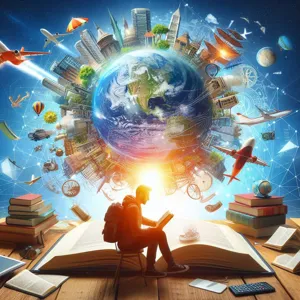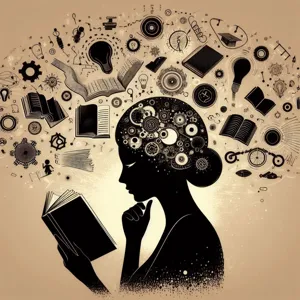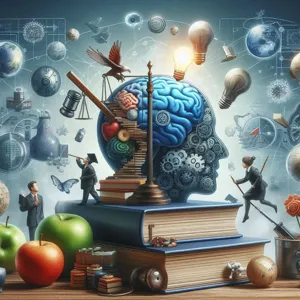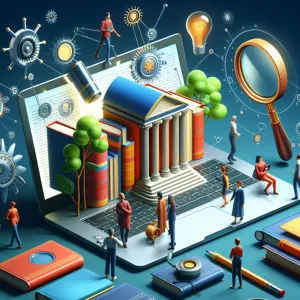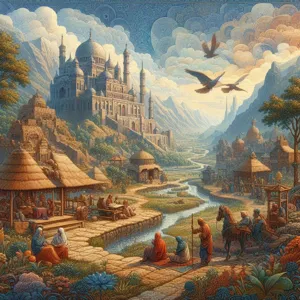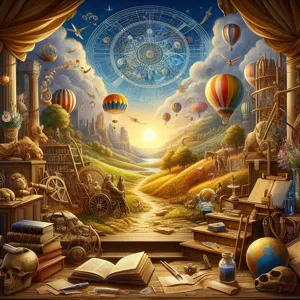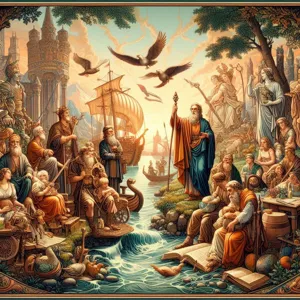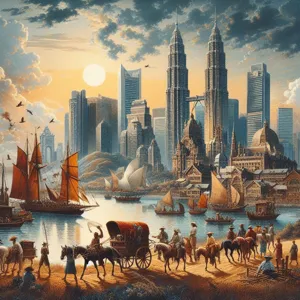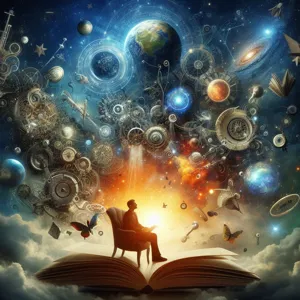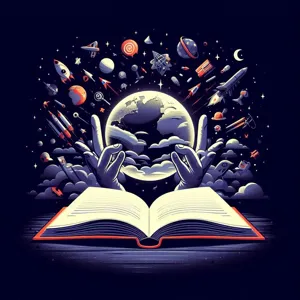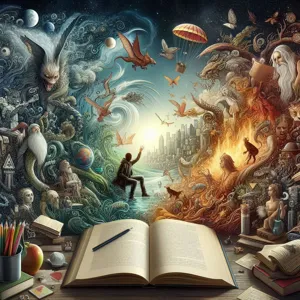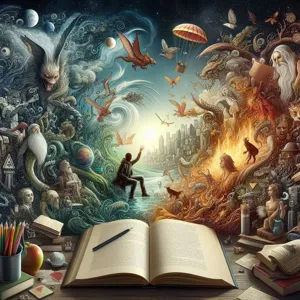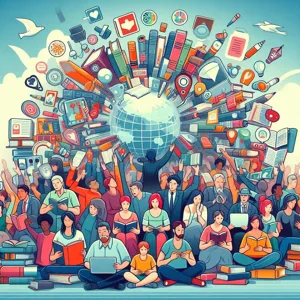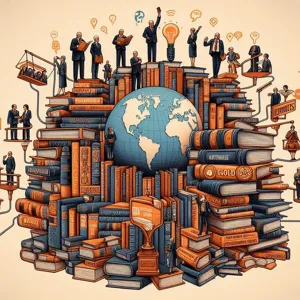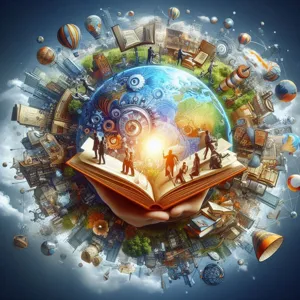In a world where stress and chaos often reign supreme, finding a good laugh can be the ultimate remedy for the soul.
Whether you’re commuting to work, lounging at home, or simply in need of a pick-me-up, there’s nothing quite like diving into a book that tickles your funny bone. From sharp-witted satire to absurd comedy, the literary landscape is brimming with hilarious gems that promise to leave you in stitches. In this post, we’ve curated a list of the top 10 hilariously witty books that will not only entertain you but also brighten your day. each selection is packed with clever wordplay, unforgettable characters, and laugh-out-loud moments that will resonate long after you’ve turned the last page. So grab your favorite cozy blanket, settle in, and get ready to discover the ultimate collection of comedic masterpieces that are sure to make you laugh out loud!
1. Introduction: The Power of Laughter in Literature

In a world often filled with stress and uncertainty, laughter serves as a powerful antidote, offering a momentary escape from the mundane. Literature, with its vast array of genres and styles, has a unique ability to evoke a spectrum of emotions, but few can match the sheer joy and relief that comes from a good laugh. Whether it’s a clever pun, a quirky character, or a ridiculous scenario, the art of humor in writing can lighten our spirits and bring people together through shared laughter.
Humorous books hold a special place in the literary landscape, inviting readers to immerse themselves in stories that tickle the funny bone and provoke hearty chuckles. From witty observations about everyday life to outrageous escapades that defy logic, these books not only entertain but also encourage us to see the lighter side of our own experiences. After all, laughter is not just a reaction; it’s a way of coping, understanding, and connecting with the world.
In this blog post, we will explore ten hilariously witty books that will have you laughing out loud, each one showcasing the brilliance of humor in various forms. Whether you’re seeking a lighthearted read to lift your spirits or a comedic masterpiece to share with friends, these selections promise to deliver joy and laughter, reminding us all of the importance of humor in our lives. So, grab your favorite beverage, find a cozy spot, and prepare to embark on a laughter-filled journey through the pages of these delightful reads!
2. Criteria for Choosing the Witty Books
When it comes to selecting the top hilariously witty books that will have you laughing out loud, it’s essential to establish some clear criteria to ensure each recommendation delivers both humor and charm. After all, not every book labeled “funny” will tickle your fancy, and the nuances of humor can vary significantly from one reader to another.
**1. Quality of Humor**: First and foremost, the book must possess a strong sense of humor that resonates with a broad audience. This can include clever wordplay, sharp satire, or absurd situations that lead to laugh-out-loud moments. We seek authors with a unique voice and talent for crafting punchy one-liners or clever anecdotes that keep readers engaged.
**2. Relatability**: The best witty books often draw from everyday experiences that many can relate to, making the humor all the more impactful. Whether it’s navigating the complexities of adulting, family dynamics, or awkward social situations, relatable themes help readers to connect with the content on a personal level, allowing for an even bigger laugh.
**3. Character Development**: Strong, memorable characters are crucial in comedy. Books that feature well-developed characters with distinct personalities and quirks can elevate the humor from merely funny to truly unforgettable. The interactions and relationships between these characters often serve as the catalyst for the book’s comedic moments.
**4. Unique Perspective**: We also consider the author’s original take on familiar topics. A fresh perspective not only adds depth to the humor but also invites readers to see the world through a comedic lens they may not have considered before. This creativity can transform mundane situations into laugh-inducing scenarios.
**5. Writing Style**: Lastly, the writing style plays a significant role in how humor is conveyed. We look for authors who can skillfully balance narrative flow with comedic timing, ensuring that jokes land effectively without disrupting the story’s pace. A witty writing style can turn an average joke into something spectacularly funny.
By applying these criteria, we ensure that the books featured in our list not only elicit chuckles but also provide a delightful reading experience that you won’t soon forget. Prepare to dive into a selection of books where humor reigns supreme, and laughter is just a page turn away!
3. Book #1: [Title and Author] – A Brief Synopsis

3. **Book #1: “The Hitchhiker’s Guide to the Galaxy” by Douglas Adams – A Brief Synopsis**
Prepare for a cosmic journey through absurdity with Douglas Adams’ satirical sci-fi classic, “The Hitchhiker’s Guide to the Galaxy.” This book introduces us to Arthur Dent, an ordinary human who is whisked away from Earth just before it is demolished to make way for an interstellar bypass. As he traverses the galaxy, Arthur teams up with an eccentric cast of characters, including Ford Prefect, a roguish researcher for the titular guidebook, and Zaphod Beeblebrox, a two-headed, three-armed ex-President of the Galaxy with a penchant for mischief.
What makes this book laugh-out-loud funny is Adams’ unique ability to blend the absurd with the profound. From the hilariously bureaucratic Vogons who recite atrocious poetry as a form of torture to the insightful yet humorous commentary on life, the universe, and everything (spoiler alert: the answer is 42), each page is packed with clever wordplay and unexpected twists. Whether it’s the absurdity of intergalactic travel or the quirks of alien civilizations, Adams crafts a narrative that is both entertaining and thought-provoking.
Fans of dry wit and clever humor will find themselves chuckling at the sheer unpredictability of the plot and the bizarre scenarios that unfold. “The Hitchhiker’s Guide to the Galaxy” is not just a book; it’s an experience that promises to leave readers in stitches while also inviting them to ponder the greater mysteries of existence. Perfect for anyone in need of a hearty laugh, this book is a timeless reminder that sometimes, the best way to navigate life’s challenges is to embrace the chaos with a smile.
4. Book #2: [Title and Author] – Why It’s Hilarious
### 4. Book #2: *Good Omens* by Neil Gaiman and Terry Pratchett – Why It’s Hilarious
*Good Omens* is a comedic masterpiece that brings together two of the most brilliant minds in fantasy literature, Neil Gaiman and Terry Pratchett. This novel spins a wickedly funny tale about the impending apocalypse, showcasing the misadventures of an angel, Aziraphale, and a demon, Crowley, who have grown rather fond of Earth and are not particularly keen on its destruction. Their unlikely friendship leads to a series of absurd situations that are both clever and laugh-out-loud funny.
The humor in *Good Omens* is multifaceted, blending sharp wit with irreverent commentary on human nature, religion, and the universe itself. The authors masterfully play with tropes of the genre, using delightful sarcasm and unexpected punchlines that keep readers on their toes. From the hilarious antics of the Antichrist, who is just a confused little boy trying to navigate life in the suburbs, to the incompetent band of witch hunters, Gaiman and Pratchett craft a narrative that is both whimsical and deeply insightful.
What makes this book particularly special is its ability to tackle serious themes with a light-hearted touch. The dialogue is snappy, the characters are richly drawn and utterly relatable, and the plot twists are as unpredictable as they are entertaining. Whether it’s the bumbling bureaucratic angels or the hilariously misguided prophecies of a witch, every page is filled with delightful absurdities that are sure to elicit genuine laughter.
With its blend of fantasy and humor, *Good Omens* is not just a book; it’s a joyful romp through the absurdities of existence. Whether you’re a fan of Gaiman’s dark fantasy or Pratchett’s satirical brilliance, this book promises to tickle your funny bone and keep you chuckling long after you’ve turned the last page.
5. Book #3: [Title and Author] – Memorable Quotes

### 5. Book #3: “Good Omens” by Neil Gaiman and Terry Pratchett – Memorable Quotes
“Good Omens” is a delightful collaboration between two literary giants, Neil Gaiman and Terry Pratchett, and it effortlessly weaves humor into the fabric of an apocalypse. The story revolves around an angel and a demon who team up to prevent the coming of the Antichrist, leading to an assortment of uproarious situations that showcase the authors’ unique comedic styles.
One of the most memorable quotes from the book captures its essence perfectly: “The end of the world is not something you can just set your watch to.” This line epitomizes the book’s playful take on serious themes, inviting readers to chuckle at the absurdity of existence. Another gem is, “It is a truth universally acknowledged that a single man in possession of a good fortune must be in want of a wife.” Here, Pratchett and Gaiman brilliantly twist a classic literary reference, showcasing their knack for satire.
Every page is sprinkled with witty observations and laugh-out-loud moments that make you rethink everything you thought you knew about fate, free will, and the cosmic balance of good and evil. The characters, from the bumbling demon Crowley to the enthusiastic angel Aziraphale, are unforgettable, with their banter serving as a reminder that even in the face of impending doom, humor can be found in the most unexpected places.
Whether you’re a fan of fantasy or simply in need of a good laugh, “Good Omens” is a must-read that guarantees both entertainment and a few thoughtful chuckles along the way. So grab a copy, find a cozy spot, and get ready to laugh out loud as you journey through a world where the end times are anything but ordinary!
6. Book #4: [Title and Author] – Unique Humor Style
### 6. Book #4: *The Hitchhiker’s Guide to the Galaxy* by Douglas Adams – Unique Humor Style
Get ready to embark on a space-faring adventure that is as absurd as it is hilarious with Douglas Adams’ *The Hitchhiker’s Guide to the Galaxy*. This beloved classic seamlessly blends science fiction with a unique brand of British wit that has captivated readers for decades.
Adams’ writing is a delightful concoction of dry humor and clever wordplay, creating a narrative that feels both whimsical and profound. From the very first line, where readers learn that the Earth is about to be demolished to make way for a hyperspace bypass, you’re immediately thrust into a world where the ridiculous reigns supreme. The protagonist, Arthur Dent, is a quintessential everyman who, armed only with a towel and his bewilderment, navigates the galaxy’s peculiarities.
What sets this book apart is its ability to find humor in the mundane and the cosmic alike. Adams’ keen observations on the absurdities of life, the universe, and everything in between are peppered throughout the narrative. Whether it’s the bureaucratic inefficiencies of intergalactic travel or the nonsensical logic of alien life forms, each page is infused with a sense of playful irreverence.
One particularly memorable character is Marvin the Paranoid Android, whose deadpan delivery and existential musings about life’s futility provide a hilarious counterpoint to the chaotic adventures unfolding around him. His gloomy outlook juxtaposed with the absurdity of the situations makes for laugh-out-loud moments that linger long after you’ve closed the book.
*The Hitchhiker’s Guide to the Galaxy* is not just a story; it’s an experience that invites readers to embrace the chaos of life with a hearty laugh. With its unique humor style and unforgettable characters, this book is a must-read for anyone looking to lighten their mood and revel in the hilarity of existence. So, grab your towel and prepare for a journey that promises both laughter and a bit of existential contemplation!
7. Book #5: [Title and Author] – A Comedic Take on Everyday Life

### 7. Book #5: *Me Talk Pretty One Day* by David Sedaris – A Comedic Take on Everyday Life
In *Me Talk Pretty One Day*, David Sedaris masterfully transforms the mundane aspects of everyday life into a laugh-out-loud exploration of the absurdities we often overlook. Set against the backdrop of his relocation to France, Sedaris navigates the trials of language barriers, cultural misunderstandings, and the quirks of his eccentric family with a sardonic wit that is uniquely his own.
From the very first page, readers are drawn into Sedaris’s world where he recounts his struggles to learn French while simultaneously trying to adapt to a new culture. His self-deprecating humor shines through as he describes his misadventures in the classroom—an environment that should foster learning but instead becomes a stage for comedic blunders. Whether it’s his hilarious attempts to pronounce simple phrases or his interactions with his equally baffled classmates, Sedaris’s anecdotes are relatable and riotously funny.
But it’s not just his experiences in France that keep readers chuckling; Sedaris also revisits his childhood memories and family dynamics with a sharp, observational lens. His stories about his quirky relatives and their peculiarities paint a vivid picture of a family that is both chaotic and endearing. Each chapter is a delightful blend of poignant reflections and laugh-out-loud moments, making it a book that resonates with anyone who has ever felt out of place or misunderstood.
*Me Talk Pretty One Day* is not just a collection of essays; it’s a celebration of life’s little absurdities, reminding us that laughter can be found in the most unexpected places. So, if you’re in need of a good chuckle and a shift in perspective, grab a copy of Sedaris’s humorous masterpiece. You’ll find yourself laughing out loud and appreciating the beautifully chaotic tapestry of everyday life.
8. Book #6: [Title and Author] – Satire at Its Best
### 8. Book #6: *Good Omens* by Neil Gaiman and Terry Pratchett – Satire at Its Best
If you’re on the hunt for a book that brilliantly blends humor with a touch of the supernatural, look no further than *Good Omens*. This delightful collaboration between two of fantasy’s most revered authors, Neil Gaiman and Terry Pratchett, serves up a deliciously witty narrative that revolves around the unlikely friendship between an angel and a demon. As the apocalypse looms, the pair teams up to prevent the end of the world—because, frankly, both sides quite enjoy life on Earth.
What makes *Good Omens* a standout is its sharp satire that pokes fun at everything from organized religion to human nature itself. Gaiman and Pratchett masterfully craft a world where the absurd is the norm, and every character—from the bumbling Antichrist to the eccentric witch hunters—adds their unique flavor to the comedic chaos. As you dive into this tale, you’ll find yourself chuckling at the clever dialogue and tongue-in-cheek observations about fate, free will, and the overall silliness of existence.
With each turn of the page, readers are treated to delightful anecdotes and hilarious mishaps that will have you laughing out loud. Whether it’s the absurdity of a hellhound raised as a house pet or the comically misguided attempts at prophecy, *Good Omens* serves up a feast of humor that is both light-hearted and thought-provoking. It’s the perfect read for those who appreciate a good laugh mixed with a healthy dose of satire, making it a must-have on your bookshelf. So grab a copy, settle in, and prepare for a ride that’s as entertaining as it is witty!
9. Book #7: [Title and Author] – Laugh-Out-Loud Moments
### 9. Book #7: *Where’d You Go, Bernadette* by Maria Semple – Laugh-Out-Loud Moments
In *Where’d You Go, Bernadette*, Maria Semple crafts a brilliantly funny narrative that captures the chaotic life of an unconventional mother, Bernadette Fox. The novel unfolds through a series of emails, documents, and snippets of correspondence, creating a wonderfully fragmented yet cohesive story that will keep you chuckling from start to finish.
Bernadette, a once-celebrated architect turned hermit, is equal parts genius and disaster. Her satirical observations about suburban life and the absurdities of modern parenting are both relatable and uproarious. From her outrageous interactions with the overly involved parents at her daughter Bee’s school to her epic battles with a particularly pesky neighbor, every page is packed with laugh-out-loud moments that showcase Semple’s sharp wit.
One standout scene involves Bernadette’s hilarious attempt to navigate the tech world, which results in a series of comical miscommunications. Whether she’s begrudgingly dealing with the insufferable “Moms” of Seattle or plotting her grand escape to Antarctica, her antics are guaranteed to leave you in stitches.
Semple’s clever writing and Bernadette’s quirky personality remind us that life’s absurdities are often best tackled with humor. In *Where’d You Go, Bernadette*, you’ll find laughter in the chaos and a heartfelt reminder of the importance of being true to oneself. This book is not just a story; it’s a joyful experience that promises to keep you giggling long after you’ve turned the last page.
10. Book #8: [Title and Author] – Unexpected Twists of Humor
### 10. Book #8: *The Hitchhiker’s Guide to the Galaxy* by Douglas Adams – Unexpected Twists of Humor
Prepare yourself for a wild ride through the cosmos with Douglas Adams’ iconic sci-fi comedy, *The Hitchhiker’s Guide to the Galaxy*. This literary gem is not just a book; it’s a brilliantly absurd journey that explores the universe with a quirky charm that can only be described as uniquely Adams. From the very first page, readers are thrust into the chaotic life of Arthur Dent, an everyman who unwittingly becomes embroiled in intergalactic adventures after Earth is demolished to make way for a hyperspace bypass.
What makes this novel a standout in the realm of humor is its unexpected twists that subvert traditional storytelling. Just when you think you’ve figured out the plot, Adams throws a curveball that leaves you gasping for breath between fits of laughter. The characters are as eccentric as the situations they find themselves in—like Ford Prefect, the alien researcher for the titular guide, who is perpetually unfazed by the chaos surrounding him, or Zaphod Beeblebrox, a two-headed, three-armed ex-President of the Galaxy whose reckless antics keep you on your toes.
Adams’ wit shines through every page with clever wordplay, absurdity, and philosophical musings that poke fun at the very nature of life, the universe, and everything in between. With iconic passages that have become part of the cultural lexicon (like the infamous “Don’t Panic”), this book offers more than just humor; it invites readers to contemplate the inexplicable nature of existence while laughing out loud.
Whether you’re a longtime fan or new to the series, *The Hitchhiker’s Guide to the Galaxy* promises to deliver unexpected twists that will keep you chuckling long after you’ve turned the last page. So grab your towel, hitch a ride on a passing spaceship, and get ready for a comedic adventure that’s truly out of this world!
11. Book #9: [Title and Author] – The Author’s Wit and Charm
### Book #9: “Good Omens” by Neil Gaiman and Terry Pratchett – The Author’s Wit and Charm
In a delightful fusion of fantasy and humor, “Good Omens” delivers a laugh-out-loud experience that showcases the unparalleled wit of Neil Gaiman and Terry Pratchett. This irreverent tale of an angel and a demon teaming up to prevent the apocalypse is not only a satirical exploration of good versus evil but also a brilliant commentary on the absurdities of human nature.
From the very first page, Gaiman and Pratchett’s playful prose draws readers into a world where the mundane intersects with the extraordinary. The dialogue sparkles with a mix of dry humor and clever wordplay, ensuring that there’s not a dull moment. The quirky characters, including the inept demon Crowley and the overly meticulous angel Aziraphale, embody the authors’ signature charm, making each interaction a source of comedic gold.
As the plot unfolds, the duo’s misadventures are punctuated by sharp observations about organized religion, fate, and the unpredictability of life, proving that laughter can often be found in the most unexpected places. The witty banter, combined with absurd situations—like a psychic child and a misplaced Antichrist—creates a tapestry of hilarity that keeps readers chuckling long after they’ve turned the last page.
Whether you’re a fan of fantasy or simply in need of a good laugh, “Good Omens” is a must-read that showcases the authors’ delightful ability to find humor in chaos, leaving you with a smile and a newfound appreciation for the quirks of existence.
12. Book #10: [Title and Author] – Reader Reviews and Reactions
### Book #10: “Good Omens” by Neil Gaiman and Terry Pratchett – Reader Reviews and Reactions
As we wrap up our list of hilariously witty books, “Good Omens” stands out not just for its brilliant humor, but also for the delightful chaos that ensues when an angel and a demon team up to prevent the apocalypse. Readers have been raving about this cult classic since its publication, and it’s easy to see why.
Fans of the book often describe it as “a divine comedy” that balances clever wordplay with absurdity. They appreciate how Gaiman and Pratchett masterfully weave together satire, fantasy, and deep existential musings, all while maintaining a light-hearted tone. Many readers have shared their favorite moments, from the hilariously inept angel Aziraphale and the charmingly mischievous demon Crowley to the misadventures of the Antichrist himself, who just happens to be a sweet, confused boy named Adam.
One enthusiastic reader summed it up perfectly: “I laughed so hard I nearly spilled my coffee! This book is a rollercoaster of wit and whimsy.” Others have remarked on the book’s uncanny ability to blend the profound with the ridiculous, calling it “a love letter to the absurdity of life.”
The reactions don’t stop at laughter; many readers express a sense of camaraderie with the book’s quirky characters and their absurd predicaments. Comments often highlight the relatability of the characters’ struggles, making the humor all the more impactful. As one user noted, “I found myself nodding along in agreement while laughing out loud. It’s a testament to the genius of Gaiman and Pratchett that they can make you laugh while also making you think.”
In the age of digital distractions, “Good Omens” has proven to be a timeless favorite, prompting readers to share their favorite quotes and moments on social media, creating a community of fans that celebrate the remarkable blend of humor and insight that this book offers. If you’re looking for a book that promises to uplift your spirits and tickle your funny bone, “Good Omens” is a must-read that will have you chuckling long after you’ve turned the last page!
13. Conclusion: Why We Need More Laughter in Our Lives
In a world that often feels weighed down by the seriousness of daily life, the power of laughter becomes not just a luxury but a necessity. As we’ve explored in our list of hilariously witty books, humor is a potent antidote to stress, anxiety, and even the mundane routines that can bog us down. Laughter has a unique ability to bridge divides, foster connections, and provide a fresh perspective on our everyday struggles.
These books remind us that joy can be found in the most unexpected places, often through the clever observations and playful wordplay of skilled authors. Whether it’s a satirical take on societal norms or a lighthearted tale that mirrors our own quirks, each story offers a delightful escape that allows us to view life through a more cheerful lens.
Moreover, laughter has significant health benefits, from boosting our mood and enhancing our emotional well-being to even strengthening our immune systems. When we laugh, we release endorphins, the body’s natural feel-good chemicals, which help us navigate life’s challenges with a little more grace. It’s no wonder that many great thinkers have championed the importance of laughter as a vital component of a well-rounded life.
So, as you close this post and perhaps pick up one of the recommended reads, remember that incorporating laughter into our lives is not just about enjoyment; it’s about nurturing our mental health and fostering a sense of community. In a time when we can all use a little more levity, these books are your ticket to not just a good laugh but a reminder that joy is always just a page away. Embrace the humor, share a laugh with friends, and let’s collectively lighten our hearts!
14. Bonus Recommendations: Additional Witty Reads
If you’re still hungry for more laughter and clever prose, we’ve got you covered with these bonus recommendations that promise to tickle your funny bone and keep you chuckling long after you’ve turned the last page.
**1. *The Hitchhiker’s Guide to the Galaxy* by Douglas Adams**
This sci-fi comedy classic is a must-read for anyone who enjoys a good laugh paired with absurdity. Follow the hapless Arthur Dent as he navigates the galaxy with a towel and a rather quirky alien, encountering bizarre creatures and mind-bending concepts that will leave you in stitches. Adams’ sharp wit and playful language make every twist of the plot an absolute delight.
**2. *Me Talk Pretty One Day* by David Sedaris**
In this collection of autobiographical essays, Sedaris shares his experiences living in France and grappling with the language barrier, all while delivering his signature humor. His keen observations about life, family, and the absurdities of everyday situations are both relatable and hilarious, making this book a perfect addition to any witty reading list.
**3. *Good Omens* by Neil Gaiman and Terry Pratchett**
This collaborative novel combines the unique styles of two beloved authors, resulting in a comedic tale about an angel and a demon teaming up to prevent the apocalypse. With its clever dialogue, quirky characters, and satirical take on good vs. evil, *Good Omens* is a riotous read that explores the hilarities of humanity’s foibles.
**4. *Hyperbole and a Half* by Allie Brosh**
Originally a popular webcomic, Allie Brosh’s book brings her unique brand of humor and storytelling into the printed page. With a mix of illustrations and personal anecdotes, she tackles everything from her childhood pets to the struggles of adulthood with an honesty that resonates and makes you laugh out loud.
**5. *The Importance of Being Earnest* by Oscar Wilde**
No list of witty reads would be complete without a nod to the master of wit himself, Oscar Wilde. This classic play is a brilliant satire of Victorian society, filled with sharp dialogue and memorable characters. Wilde’s clever wordplay and humorous critique of social norms make it a timeless piece that remains as funny today as it was over a century ago.
These bonus titles will ensure your bookshelf is brimming with laughter-inducing reads that cater to every taste. Whether you prefer the absurdity of science fiction, personal essays that hit close to home, or the sharp critique of society, these selections will keep you chuckling and entertained, solidifying their place in your collection of hilariously witty books!
15. Call to Action: Share Your Favorite Funny Books!
As we wrap up this delightful journey through the world of hilariously witty literature, we want to hear from you! What are the books that have tickled your funny bone, made you snort with laughter, or left you in stitches long after you turned the last page? Whether it’s a classic comedy, a contemporary satire, or an offbeat memoir that had you howling in delight, we invite you to share your favorites in the comments below!
Your recommendations could introduce fellow readers to hidden gems that they may have missed, sparking a joyful exchange of laughter-filled moments. Did a particular author’s quirky style resonate with you? Or perhaps a specific plot twist turned a mundane day into a riotous adventure? Whatever it is, we want to know!
So, grab your keyboards and let the laughter continue. Share your top picks, and let’s create a community of humor enthusiasts who celebrate the written word’s ability to uplift our spirits and bring joy into our lives. After all, the world can always use a little more laughter—what better way to spread happiness than by sharing the funniest books that have ever graced your shelves? We can’t wait to read your suggestions!
As we wrap up our list of the top 10 hilariously witty books that are sure to bring a smile to your face, we hope you’ve discovered some delightful new reads to add to your bookshelf. Laughter is a powerful antidote to life’s stresses, and each of these books offers a unique blend of humor, clever storytelling, and unforgettable characters that will keep you chuckling long after you’ve turned the last page. Whether you’re in need of a light-hearted escape or simply want to share some giggles with friends, these literary gems have got you covered. So grab a cozy blanket, settle into your favorite reading nook, and prepare for a joyful journey through the pages of wit and laughter. Happy reading, and may your bookshelf always be filled with humor!

